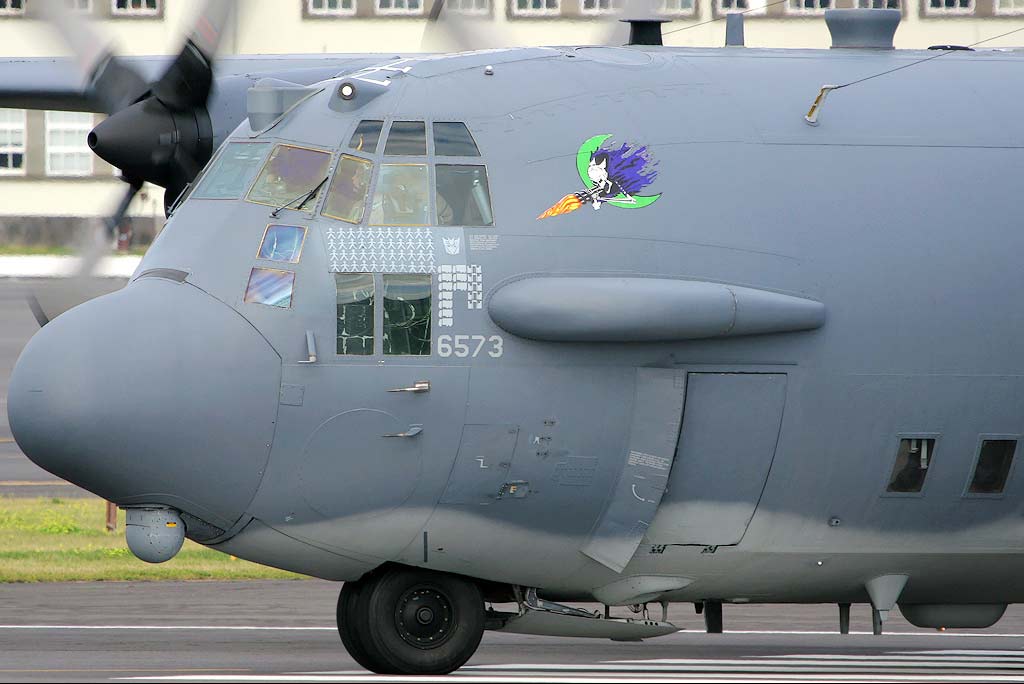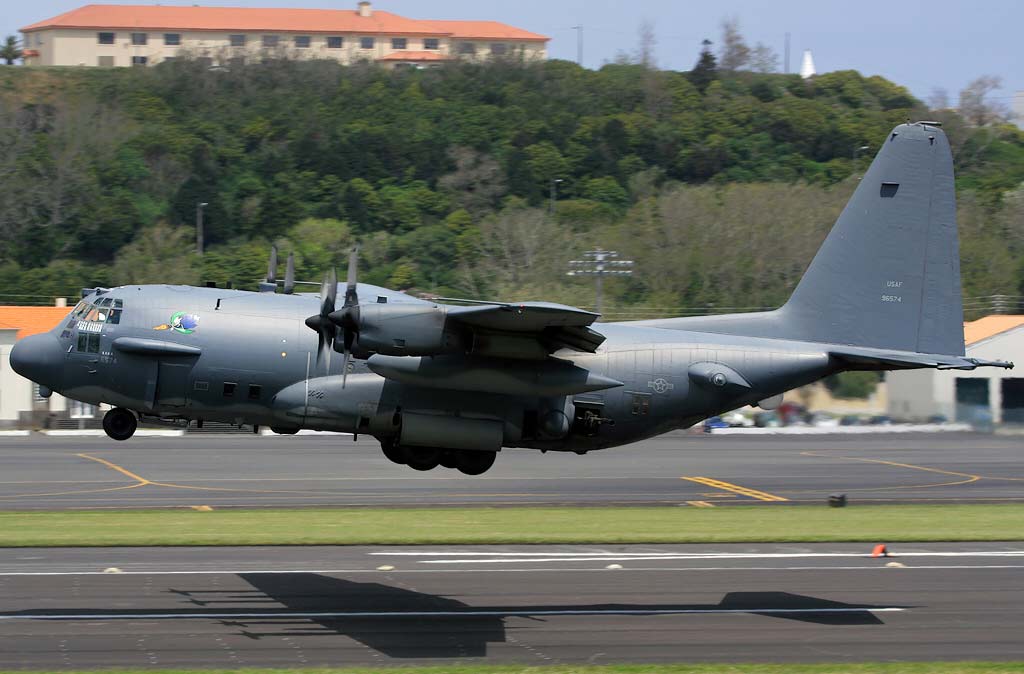Gunships designed for close air support, air interdiction, and force protection with powerful, diverse armaments.
In brief
The Lockheed AC-130 gunship variants, Spectre (H model) and Spooky (U model), are heavily armed, long-endurance aircraft designed for close air support, air interdiction, and force protection. Originating from the C-130 Hercules transport, these platforms have been modified to include sophisticated sensor, navigation, and fire control systems, allowing for precision strikes. Equipped with a combination of 105mm howitzer, 40mm Bofors cannon, and 25mm Gatling guns, they offer versatile firepower capable of supporting ground forces in various combat scenarios. These aircraft operate primarily at night to exploit their advanced sensor suites and reduce vulnerability to ground fire.

History of the Development of the Lockheed AC-130H Spectre
The Lockheed AC-130H Spectre’s development was a response to the evolving needs of modern warfare, where ground forces required precise, reliable air support. In the 1960s, the U.S. Air Force sought an aircraft that could deliver sustained, accurate firepower in support of ground operations, particularly in the dense environments of Vietnam. The AC-130 was born out of this necessity, adapting the reliable C-130 Hercules airframe for a gunship role.
The program was initiated by the United States Air Force to provide an advanced airborne platform capable of delivering devastating firepower with pinpoint accuracy. The first AC-130 gunship took flight in 1967, quickly proving its worth in combat. The aircraft was designed to loiter over the battlefield, providing close air support, armed reconnaissance, and force protection, making it a critical asset in counterinsurgency and irregular warfare.
The AC-130H, nicknamed “Spectre,” was introduced to offer improved performance and firepower. This variant was equipped with advanced sensors, enhanced avionics, and powerful armaments, including the 105mm howitzer, a distinctive feature among airborne platforms. The development and deployment of the AC-130H reflected the military’s strategic shift towards providing precision support to ground forces while minimizing collateral damage.
Design of the Lockheed AC-130H Spectre
The Lockheed AC-130H Spectre’s design is a testament to the adaptability and versatility of the C-130 Hercules airframe. Engineers modified the airframe to accommodate side-firing weapons, including the 105mm howitzer, 40mm Bofors cannon, and 25mm Gatling guns, along with advanced targeting sensors and a sophisticated fire control system. This enabled the AC-130H to engage targets with unprecedented accuracy.
The aircraft features a length of 97 feet 9 inches, a wingspan of 132 feet 7 inches, and a height of 38 feet 6 inches, with a maximum takeoff weight of 155,000 pounds. Its four Allison T56-A-15 turboprop engines allow for a top speed of 300 mph and a range of up to 2,500 miles, with an operational ceiling of 30,000 feet.
One advantage of the AC-130H’s design is its ability to loiter for extended periods over the battlefield, providing continuous support to ground forces. However, its reliance on visual identification and engagement of targets limits its effectiveness in adverse weather conditions. The inclusion of sophisticated sensors mitigates this to some extent, enabling operations in lower visibility environments.
Performance of the Lockheed AC-130H Spectre
The AC-130H Spectre’s performance characteristics are tailored to its unique mission profile. With a cruising speed of 300 mph and a loitering time of up to 10 hours with aerial refueling, it can provide sustained support over the battlefield. The aircraft’s operational ceiling of 30,000 feet allows it to stay out of reach of most conventional anti-aircraft weapons, while its suite of sensors enables engagement of ground targets from high altitudes.
In terms of firepower, the AC-130H outmatches its contemporaries in the gunship role, offering a diverse array of armaments capable of engaging both soft and armored targets. Its ability to deliver precise strikes in close proximity to friendly forces makes it an invaluable asset in urban and densely populated areas, where minimizing collateral damage is paramount.
Variants of the Lockheed AC-130H Spectre
The Lockheed AC-130H Spectre was succeeded by the AC-130U Spooky, among other variants. The Spooky introduced more powerful engines, a suite of advanced sensors, and an improved fire control system, enhancing the aircraft’s performance and lethality. The AC-130U was equipped with an updated armament package, including precision-guided munitions, expanding its role to include air interdiction and force protection.
Each variant of the AC-130 has been tailored to meet specific operational needs, with upgrades in firepower, avionics, and survivability. These improvements have ensured the platform’s relevance in modern asymmetric warfare scenarios.

Military Use and Combat of the Lockheed AC-130H Spectre
The AC-130H Spectre and its variants have seen extensive use in various conflicts, providing close air support, armed reconnaissance, and force protection. Their armament, capable of delivering a wide range of munitions, from precision-guided bombs to high-explosive shells, has made them particularly effective in supporting ground operations in conflict zones such as Afghanistan and Iraq.
The AC-130’s operational success is highlighted by its ability to conduct operations under the cover of darkness, utilizing its advanced sensor package to identify and engage targets with high precision. The aircraft have been pivotal in several key battles, providing support during critical operations and significantly impacting the outcome of engagements.
While the AC-130H has been replaced by newer variants like the AC-130J Ghostrider, the Spectre’s legacy continues in the ongoing development and deployment of gunships, emphasizing the enduring value of precise, sustained air support in modern warfare.
Recap
The Lockheed AC-130H Spectre and AC-130U Spooky represent the pinnacle of gunship design, offering unmatched firepower, endurance, and precision. Their development and operational use have demonstrated the critical importance of close air support in modern military operations, highlighting the effectiveness of adapting existing airframes to meet evolving combat requirements. As warfare continues to evolve, the lessons learned from the AC-130 program will undoubtedly influence future air support platforms, ensuring that airpower remains a decisive factor in ground combat operations.
Back to the Special Aircraft section